Tokyo Shinjuku-Ku
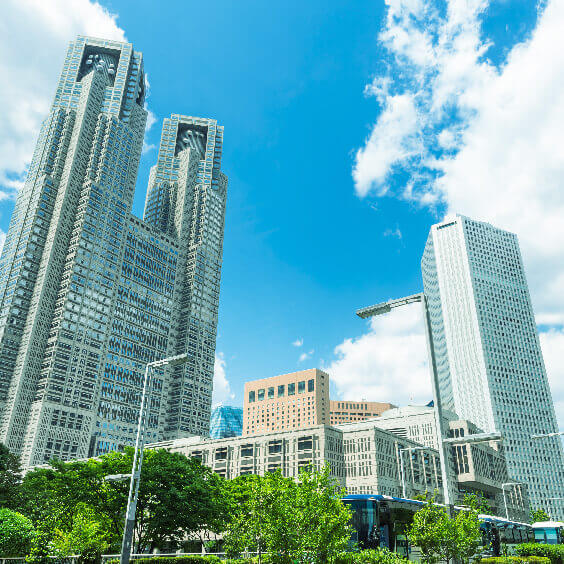
Shinjuku-Ku is centered around Shinjuku Station, the busiest train station in Japan. Shinjuku is made up of areas with their own unique characteristics and attractions, such as the downtown area represented by Kabukicho and business district with high-rise building and an area with an international flavor.
- Waseda・Takadanobaba
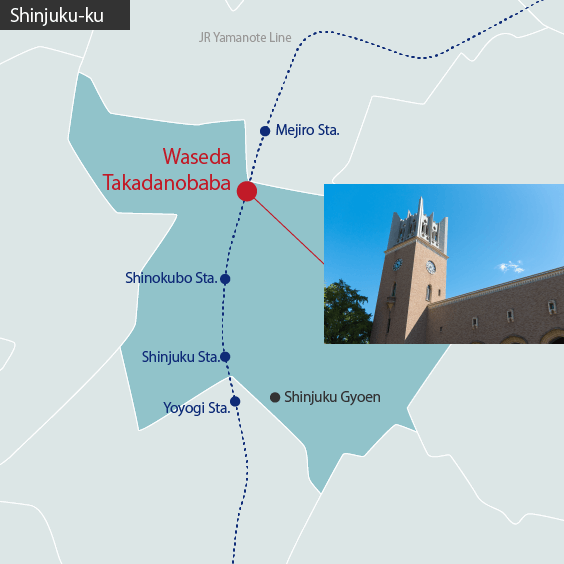
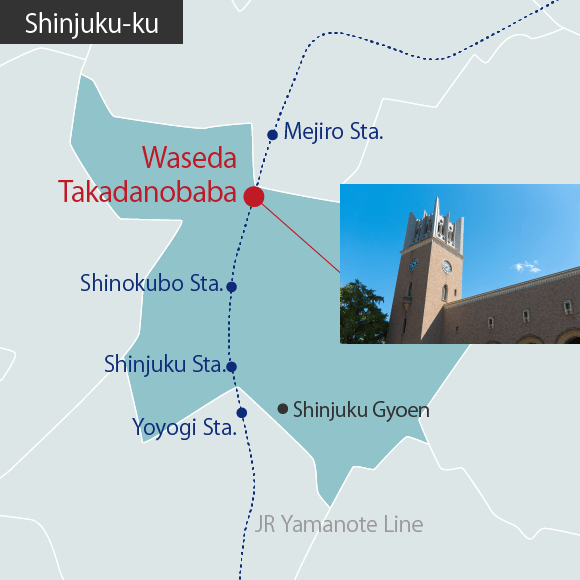
"Waseda is a peaceful area where you can enjoy the convenience of living close downtown, the history, culture, and abundant greenery unique to the Yamanote Line. The area has also developed as an educational district around Waseda University. There are many educational facilities such as cram schools and restaurants catering to students, making the area also popular with international students."
Hide Details
- Nishi-Shinjuku
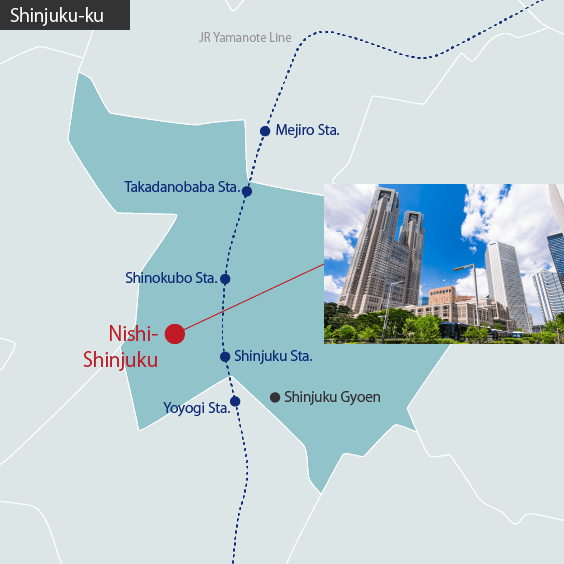
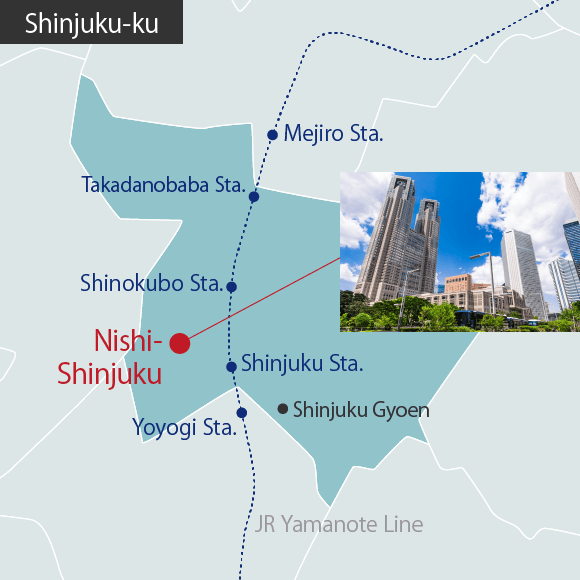
The area around Nishi-Shinjuku is lined with high-rise office buildings, hotels, and high-rise residential, centering on the Tokyo Metropolitan Government Office. You can enjoy the greenery of Shinjuku Chuo Park. On the other hand, the western part of Nishi-Shinjuku is a residential area with many middle-and low-rise housing complex and has a relatively quiet living environment.
Hide Details
- Kagurazaka

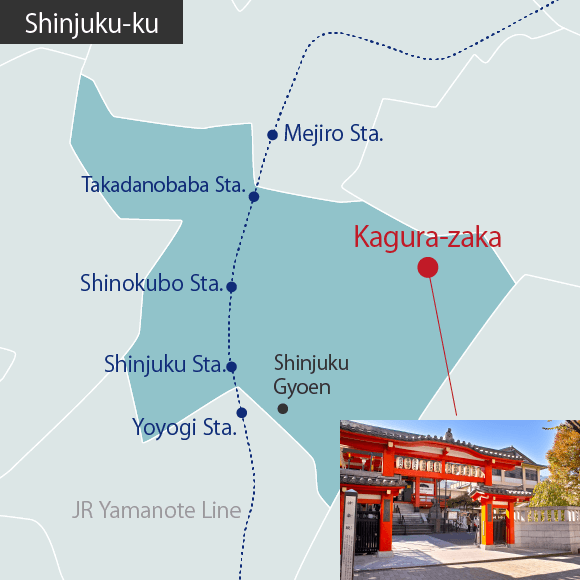
Kagurazaka is located between Iidabashi Station and Kagurazaka Station. It is a city with elegant streets and an atmosphere of history. A shopping street stretches along the front street, and once you step inside, you will find quiet cobblestone alleys. The streets are filled with quaint restaurants, eateries, and other hidden gems. For those who love the traditional Japanese atmosphere, this is an attractive area.
Hide Details
- Ichigaya・Yotsuya
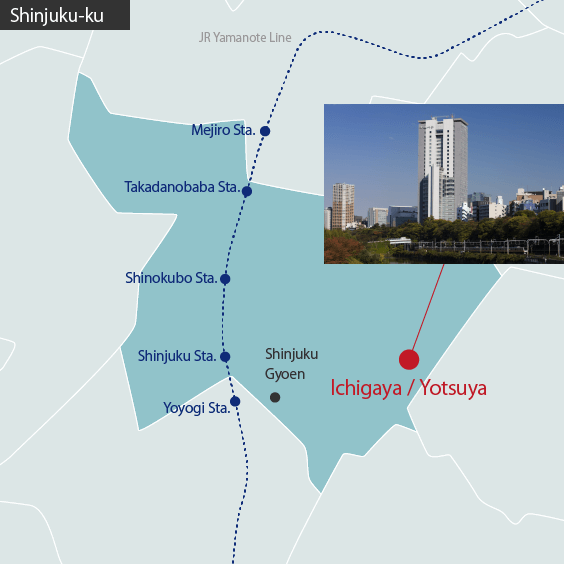
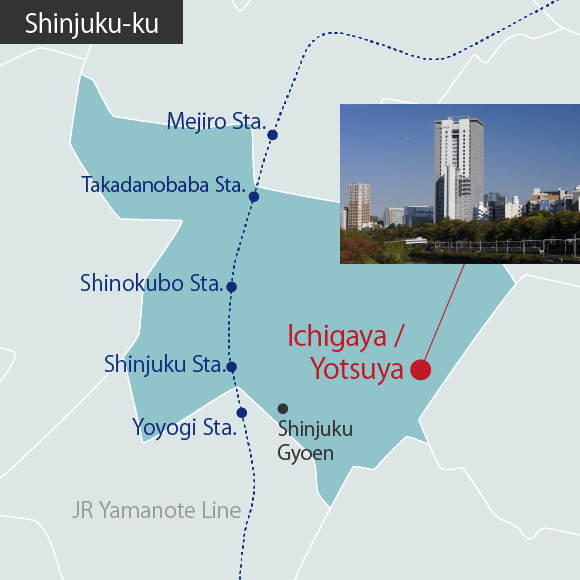
Ichigaya and Yotsuya areas are quiet areas with many former Hatamoto residences. From Ichigaya Station and Yotsuya Station, you can use multiple lines and it is convenient for transportation. It is also a great cultural area with many educational institutions such as Sophia University. There are also many green spaces and parks such as Sotobori Park, making it a popular residential area.
Hide Details


